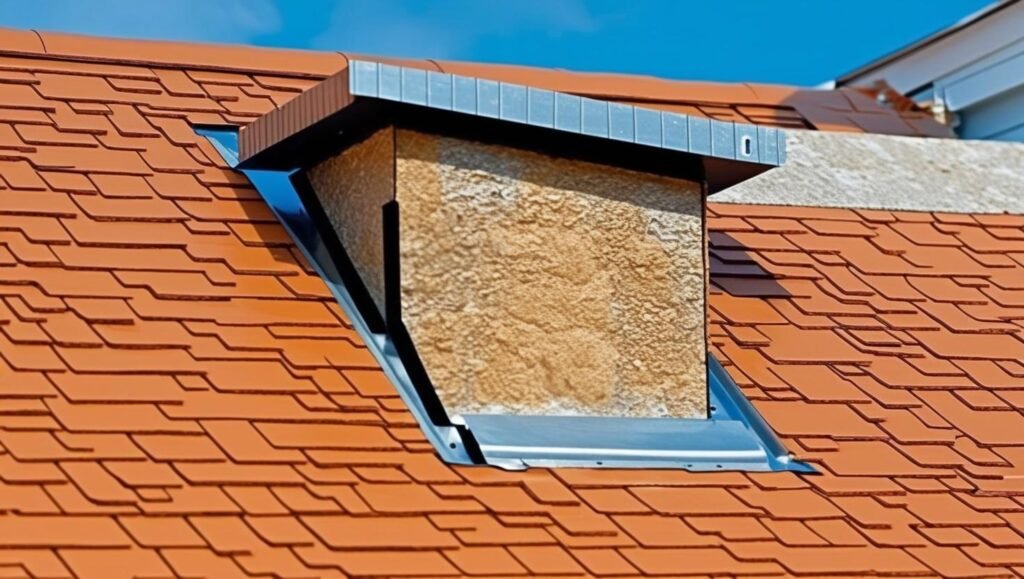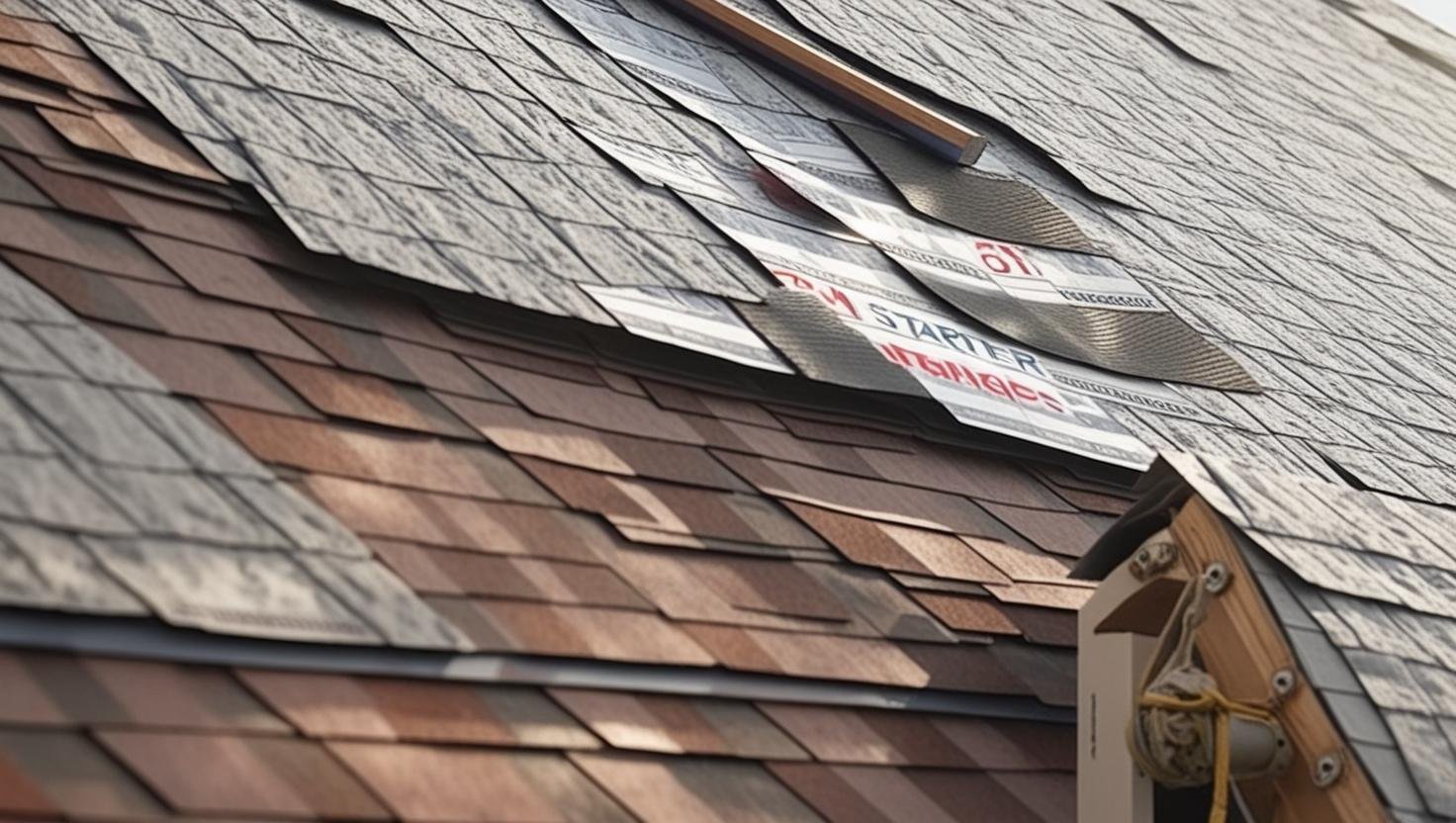The Ultimate Guide to Roof Flashing: Types, Importance, and Maintenance Tips
Table of Contents
ToggleIntroduction
Imagine this: It’s a rainy night, you’re cozy inside, and then you spot a brown stain creeping across your ceiling. Most people think it’s just a few bad shingles—but the real culprit is often something much smaller and easier to miss.
Ever wondered what is roof flashing and why this tiny piece of metal could make or break your home’s protection? Flashing might be one of the least noticeable parts of your roof, but it’s absolutely one of the most important. In fact, a missing or damaged piece of flashing is usually where the worst leaks begin.
Over the years, I’ve seen homes suffer serious damage not because the shingles failed, but because the flashing wasn’t there to do its job. In this guide, I’ll walk you through everything you need to know about roof flashing—what it is, why it matters, where it should be installed, and how to make sure your roof stays strong and leak-free for years to come.
Why is Roof Flashing Important?
When you understand what is roof flashing, you realize it’s your roof’s frontline defense. Without it, water easily finds its way into joints, edges, and corners, leading to problems like mold, wood rot, and insulation failure.
In my years as a contractor, I’ve seen how proper flashing can double the life of roofing materials. It directs rainwater and melting snow safely into the gutters, preventing it from getting trapped where different surfaces meet. Good flashing is like a raincoat for your house, shielding it against harsh weather and saving you from costly repairs later.
Where is Flashing Needed on a Roof?
Knowing what is roof flashing also means understanding where it belongs. Flashing is installed wherever water naturally tends to sneak in:
- Valleys where two roof slopes meet
- Around chimneys and skylights
- At roof edges and drip points
- Surrounding vents and pipes
In valleys, flashing forms a built-in channel to carry water off the roof. Around chimneys and skylights, it seals the gaps, keeping moisture out of the house. I always tell homeowners to inspect visible flashing once a year. Small cracks or loose sections can quickly turn into serious damage if left unchecked.
Exploring the Most Common Types of Roof Flashing
Each type of flashing has a specific job. Based on years of real-world projects, here’s a quick look at the most common types:
1. Valley Flashing
Valley flashing is placed where two sloping roof planes meet. It works like a highway, safely directing rainwater into the gutters.
2. Step Flashing
Step flashing is used where a roof meets a wall or dormer. Small, overlapping pieces of metal guide water down without letting it sneak behind the siding.
3. Continuous (Apron) Flashing
Continuous flashing, also known as apron flashing, runs along where a roof meets a vertical wall. Its long, single strip ensures no water seeps through the joint.
4. Base and Counter Flashing
Around chimneys and other protrusions, a two-part system—base flashing and counter flashing—is used. Together, they create a tight, waterproof seal that flexes with the structure.
5. Drip Edge Flashing
Installed along the roof edges, drip edge flashing directs rainwater off the roof and into the gutters, protecting the fascia boards underneath.
6. Skylight Flashing
Skylight flashing is custom-fitted around roof windows to create a tight, weatherproof seal. Most skylights come with matching flashing kits.
7. Kickout Flashing
Kickout flashing is installed where a roof edge meets a wall and gutter. It “kicks” rainwater away from the wall and into the gutter, preventing water damage to siding.
Essential Roof Flashing Insights Every Homeowner Should Know
Understanding what is roof flashing is just the first step. From what I’ve seen on job sites, most flashing failures happen for three main reasons:
- Choosing the wrong metal for the local climate
- Rushing the installation process
- Skipping regular maintenance inspections
Material choice matters a lot. For example, copper flashing might cost more upfront, but it can easily outlast cheaper metals, especially in harsh weather. I always recommend an annual flashing inspection—especially after stormy seasons—to catch minor problems before they grow into major ones.
How to Maintain Roof Flashing for Long-Term Protection
Knowing what is roof flashing is important, but keeping it in good shape is what truly protects your home year after year. Even the best-installed flashing can wear down over time if it’s not properly maintained.
Here’s how I advise homeowners to take care of their roof flashing based on what I’ve seen work best:
- Inspect Flashing Twice a Year:
Check your flashing every spring and fall, especially after heavy storms or extreme temperature changes. Look for rust, cracks, loose nails, or gaps where water might sneak in. - Clear Debris Regularly:
Leaves, twigs, and dirt can trap moisture against flashing. Clear your roof and gutters often to prevent buildup that can accelerate corrosion or rot. - Seal Small Gaps Early:
If you notice minor cracks or separations, use a high-quality roofing sealant to patch them before water gets in. Catching small problems early saves you from bigger repairs later. - Replace Damaged Sections Promptly:
If flashing is bent, rusted through, or pulled away from the roof, don’t wait. Replace it as soon as possible. Water doesn’t need a big opening to cause serious damage. - Hire a Pro for Complex Repairs:
When flashing around chimneys, skylights, or walls looks bad, it’s safer to call a professional. Complex flashing areas require skill to repair properly and ensure a watertight seal.
A little attention goes a long way. Regular maintenance not only extends the life of your flashing but also protects the investment you’ve made in your entire roofing system.

Step-by-Step Guide to Installing Step Flashing
If you’re curious about installing what is roof flashing, here’s how I do step flashing on walls:
- Start by placing the base flashing piece against the wall and over the roof deck. Nail it down gently—tight enough to hold, but loose enough to allow for expansion.
- Cover the flashing with a shingle, sealing any nail heads with roofing cement.
- Overlap each new piece of flashing about two inches over the previous one.
- Continue layering flashing and shingles alternately up the wall, making sure each layer directs water onto the shingle below.
- Finish by installing a kickout flashing at the bottom to channel water directly into the gutter.
Neat, careful layering is essential. Poorly installed flashing can cause leaks even on a brand-new roof.
Roofing Materials Guide: Options for Every Style and Budget
When picking materials, knowing what is roof flashing helps you make better decisions. Most flashing is made from:
- Copper: The premium choice. It’s flexible, durable, and develops a beautiful patina over time.
- Steel: Strong and cost-effective, especially when galvanized to resist rust.
- Aluminum: Lightweight, affordable, and easy to shape for DIY installations.
For flat or low-slope roofs, other materials like rubber, plastic, or modified bitumen are often used. These offer flexibility and excellent waterproofing. Regardless of your choice, new flashing should always be installed along with a new roof to ensure everything fits perfectly and lasts longer.
When to Call a Professional for Flashing Repairs
Flashing doesn’t last forever. Over time, exposure to the elements can cause it to crack, rust, or come loose. From what I’ve seen, you should call a roofer if you notice:
- Water stains inside your home
- Bubbling paint or patches of mold
- Rust or cracks in the flashing
- Flashing pulled loose by storms
What is roof flashing if not your roof’s main defender? Once flashing is compromised, water can quickly damage insulation, siding, and even your home’s frame. Early repairs are always cheaper than full replacements, so don’t wait if you spot a problem.
Common Signs of Flashing Failure You Should Never Ignore
Understanding what is roof flashing is crucial, but knowing how to spot early warning signs of flashing failure can save you thousands in repairs. Based on my experience, flashing problems usually start small—and if caught early, they’re easy to fix. Ignore them, and you could be facing major roof and structural damage.
Here are the most common red flags to watch for:
- Water Stains on Ceilings or Walls:
Brown spots on your interior walls or ceilings often mean water is getting past the flashing and into your home. - Drips or Leaks During Heavy Rain:
If you notice water dripping during a storm, especially near chimneys, skylights, or walls, flashing could be the problem. - Visible Rust or Corrosion:
Metal flashing exposed to constant moisture will eventually rust. Rust spots weaken the flashing and can cause cracks or holes. - Loose or Missing Flashing Pieces:
After strong winds or heavy snow, flashing can pull away from the roof. If you spot any sections flapping or missing entirely, act quickly. - Mold, Mildew, or Musty Odors:
Moisture trapped inside your walls or attic because of bad flashing can cause mold growth and musty smells. - Peeling Paint or Bubbling Exterior Walls:
Poor flashing around roof edges or walls can let water seep behind siding, causing paint to peel or blister.
If you see any of these signs, don’t wait. Quick action can often mean a simple flashing repair instead of a full-blown roof replacement.
Should You Reuse Old Flashing? The Truth
You can reuse old flashing if it’s in perfect shape, but honestly, I rarely recommend it. Flashing might look fine but could hide cracks or corrosion that aren’t visible at first glance.
When replacing a roof, it’s almost always safer to install new flashing. It’s a small investment compared to the high cost of future leaks. If you’re unsure, ask your roofer to inspect the old flashing thoroughly. It’s better to be cautious now than to deal with expensive repairs later.
Conclusion
Now that you understand what is roof flashing and why it’s vital, you’ll never look at your roof the same way again. Flashing may be easy to overlook, but it plays a massive role in keeping your home safe, dry, and structurally sound.
Whether you’re repairing a few shingles or replacing the entire roof, don’t underestimate the importance of quality flashing and regular inspections. Trust me—taking the time to get it right today will save you from major headaches tomorrow.
What Is Roof Flashing: (FAQs)
1. What is roof flashing, and why is it important?
Roof flashing is a thin material, usually made of metal, installed to direct water away from vulnerable areas like chimneys, valleys, skylights, and vents. It’s critical because it prevents leaks, mold growth, and structural damage by sealing gaps and guiding water into gutters.
2. How long does roof flashing typically last?
The lifespan of flashing depends on the material used. Copper flashing can last over 50 years, while aluminum and galvanized steel flashing usually last between 15 to 30 years. Regular inspections and maintenance can help extend its life.
3. Can I install roof flashing myself, or should I hire a professional?
Simple flashing repairs can be a DIY project if you’re comfortable working on roofs and following safety practices. However, for complex areas like chimneys or skylights, it’s best to hire a professional to ensure a proper, long-lasting seal.
4. What causes roof flashing to fail?
Common causes include improper installation, weather-related wear and tear, rust or corrosion, and building settling over time. Flashing can also be damaged by high winds, ice buildup, or debris if regular maintenance isn’t done.
5. Is it necessary to replace flashing when installing a new roof?
Yes, it’s highly recommended. Even if the old flashing looks fine, replacing it ensures that it fits perfectly with the new roofing materials and provides full protection. Reusing old flashing can lead to hidden leaks and expensive repairs later.



